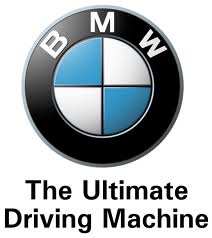 Regardless of how well a company communicates with the press, it stands a good chance of being “burned” on occasion. From minor misquote to major hatchet-job, these real and perceived offenses occupy the attention of senior managers and their advisors, whose polite clarifications and outraged denials fill the “Letters to the Editor” section of every business and trade publication.
Regardless of how well a company communicates with the press, it stands a good chance of being “burned” on occasion. From minor misquote to major hatchet-job, these real and perceived offenses occupy the attention of senior managers and their advisors, whose polite clarifications and outraged denials fill the “Letters to the Editor” section of every business and trade publication.
Unfortunately, no standard methodology exists for redress of grievances with the press. In the business of keeping everyone else honest, the news media is “one of the worst sectors in keeping themselves accountable,” according to American Lawyer editor Steven Brill.
There are, however, several field-tested procedures and certified blunders that can serve as a rudimentary first aid manual for companies. Initial triage for media burn—the decision about whether to act at all—should involve an objective appraisal of the injury’s potential for actual long-term damage, rather than a knee-jerk mission to set the record straight.
Some facts, figures and quotes, although they may be wrong or misleading, are just not worth squawking about in public. First City Bancorporation of Texas’ clarification in Business Week regarding the date of its chairman’s law degree (1956, not 1969) served only to portray that company as a nagging nitpicker. On the other hand, silence can be viewed as tacit approval of what has been reported, and misinformation no longer simply fades away. Electronic data retrieval systems, which store nearly every piece of print or broadcast information, now ensure that a news story, regardless of its accuracy, will have a life of its own.
Most reporters research current story assignments by reviewing what has been previously reported. In a classic case of this media “snowballing,” facts and opinions expressed by a California newspaper regarding Pacific Lumber Company’s tree harvesting practices—which cast the company as an environmental villain—eventually turned up in another Business Week article. Two years later, that same information provided the hook for a Fortune piece, which subsequently spawned a Reader’s Digeststory and “20/20” TV documentary.
Once the decision has been made to correct a misrepresentation in the media, a company should act quickly to document and state its case. Don’t be afraid to make some noise. A letter sent to an appropriate editor, rather than the reporter involved, should present extremely specific objections and clarifications. Very often, says Newsweek senior writer Jonathan Alter, “these letters start out, ‘There are so many errors that I can’t begin to list them…’ Right away my eyes glaze over.”
Pen Is Still Mightier Than Sword
If warranted, an initial complaint letter may be prepared by legal counsel; however, sabre-rattling at this early stage is often counterproductive. This letter should propose a reasonable solution to the problem, ranging from a mention in a corrections column to a full-scale retraction. But unless an error or bias can be proven conclusively, as most never are, an editor will stand by the story and consider the case closed. This is where more sophisticated remedies for media burn may be appropriate.
One very effective means of counteracting negative media exposure is to address the matter in head-on fashion by taking opposing viewpoints directly to target audiences. In response to a Consumer Reports article on home water filters which it considered incorrect and misleading, National Safety Associates distributed to its sales force a copy of its president’s letter to the editor of that publication; thereby helping company reps to handle the negative publicity about their products. If the stakes are high enough, direct communication with employees, shareholders and customers is in order.
Display ads with a message, a common device in proxy battles, can also be used to rebut negative editorial coverage. More often, however, companies withhold or withdraw advertising to punish “unfriendly” media outlets. The best known example involves Mobil Oil and the Wall Street Journal, but the tactic is still used frequently, with far less fanfare than the Mobil incident. Economic blackmail often backfires, however, as editors assume an even tougher reporting edge in order to demonstrate that their opinion cannot be purchased.
Boycotting relationships with the media provides a small measure of short-term gratification, yields no beneficial change, and displays an unhealthy level of arrogance. The traditional “Letter to the Editor” is often the least effective means of expressing an opposing viewpoint. Although this is a well-read section, most letters are boring, overly self-serving, assume that readers remember the original article, and can confuse the matter further. Additionally, publications such as Barron’s and the Harvard Business Review provide journalists with an opportunity to respond in elaborate fashion to the objections of letter writers.
Seasoned politicians appreciate the futility of debating anyone who controls the microphone; most rebuttal letter writers learn that lesson the hard way. A more effective use of the “Letter to the Editor” platform is to request support from a friendly, credible third party. This technique was applied by Safeway Stores Inc. following negative front-page coverage in a national newspaper. By no coincidence, the rebuttal from it s CEO was accompanied by supportive letters from company suppliers such as Sunkist Growers Inc. and Kellogg Co., an employee, a competitor, and even the chairman of the National Easter Seal Society, who confirmed Safeway’s generosity. In most cases a single letter should do the trick.
As a rule, companies prone to media burn display a chronic reluctance to announce bad news, and refuse to admit error. Chrysler Corporation’s guilt in a car odometer resetting scandal was defused effectively by chairman Iaccoca’s immediate apology and personal assurance that the mistake would not be repeated.
Que Sera, Sera
First aid for media burn calls for gracious acceptance of two important facts of business life: That an unflattering or dead wrong portrayal in the press should be viewed as an ongoing and acceptable risk when running a company; and second, that for better or worse, your firm’s long-term reputation with reporters, editors, and other important audiences is influenced by how well you manage the trauma of media burn, not simply by how adept you are at avoiding it.
[Editor’s Note: If you’ve read this far, you know the examples and sources cited in this piece are sorely outdated. This article was originally published in 1994, in the Journal of Business Strategy. Notwithstanding 20+ years and huge shifts in the media landscape, I stand by the relevance of the “media burn” guidance it offers.]










